Planning a trip to Mexico City? This bustling metropolis brims with rich history, vibrant culture, and mouthwatering cuisine. But before you pack your bags, there are a few essential things you should know to make the most of your visit.
From exploring the city’s extensive public transportation system to understanding local customs and safety tips, being well-prepared can enhance your experience. Whether you’re a first-time visitor or a seasoned traveler, these insights will help you jump into the heart of Mexico City with confidence and ease.
Key Takeaways
- Clothing and Footwear: Pack layers for varying temperatures and comfortable shoes for extensive walking. Formal attire is advised for high-end dining or social events.
- Advance Bookings: Reserve your spots at popular restaurants and museums, such as Pujol and the Frida Kahlo Museum, to avoid long waits and guarantee entry.
- Duration of Stay: Plan for at least 4-7 days to thoroughly explore key attractions and hidden gems like the Zócalo, Chapultepec Park, and Xochimilco floating gardens.
- Tipping and Payment: Tip 10-15% at restaurants and bars, and carry cash for street food and smaller establishments as credit cards are not always accepted.
- Safety Precautions: Stick to central neighborhoods like Roma, Condesa, and Polanco. Use rideshare apps like Uber for safer transportation, and avoid showing valuables in public.
- Water Safety: Avoid tap water, use bottled water for drinking and brushing teeth to prevent health issues, and be cautious with ice and raw produce.
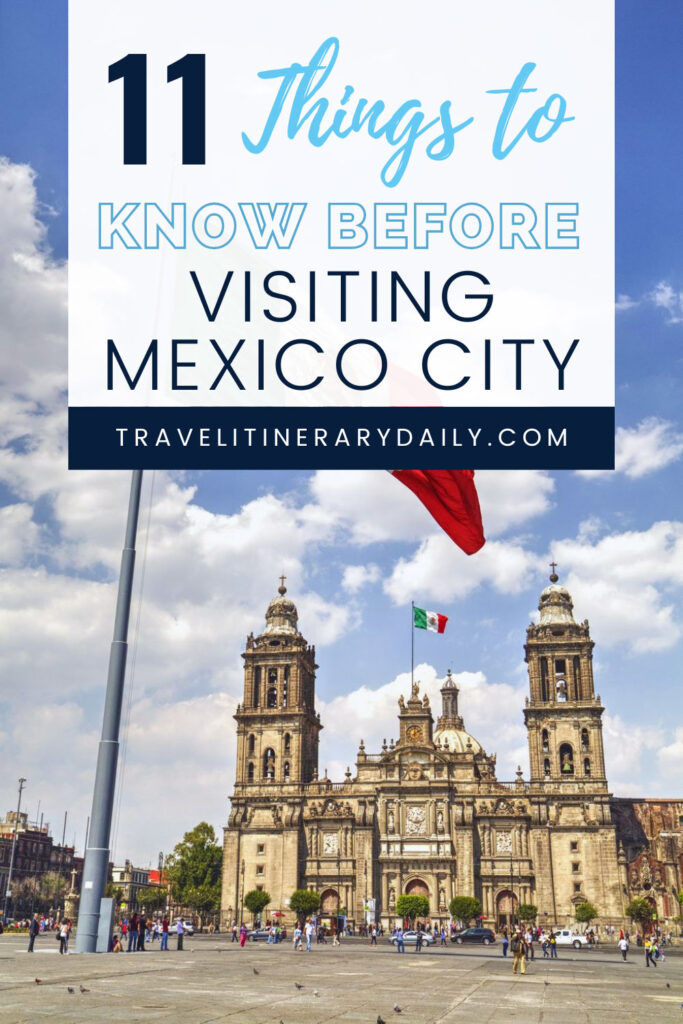
What To Pack for Mexico City
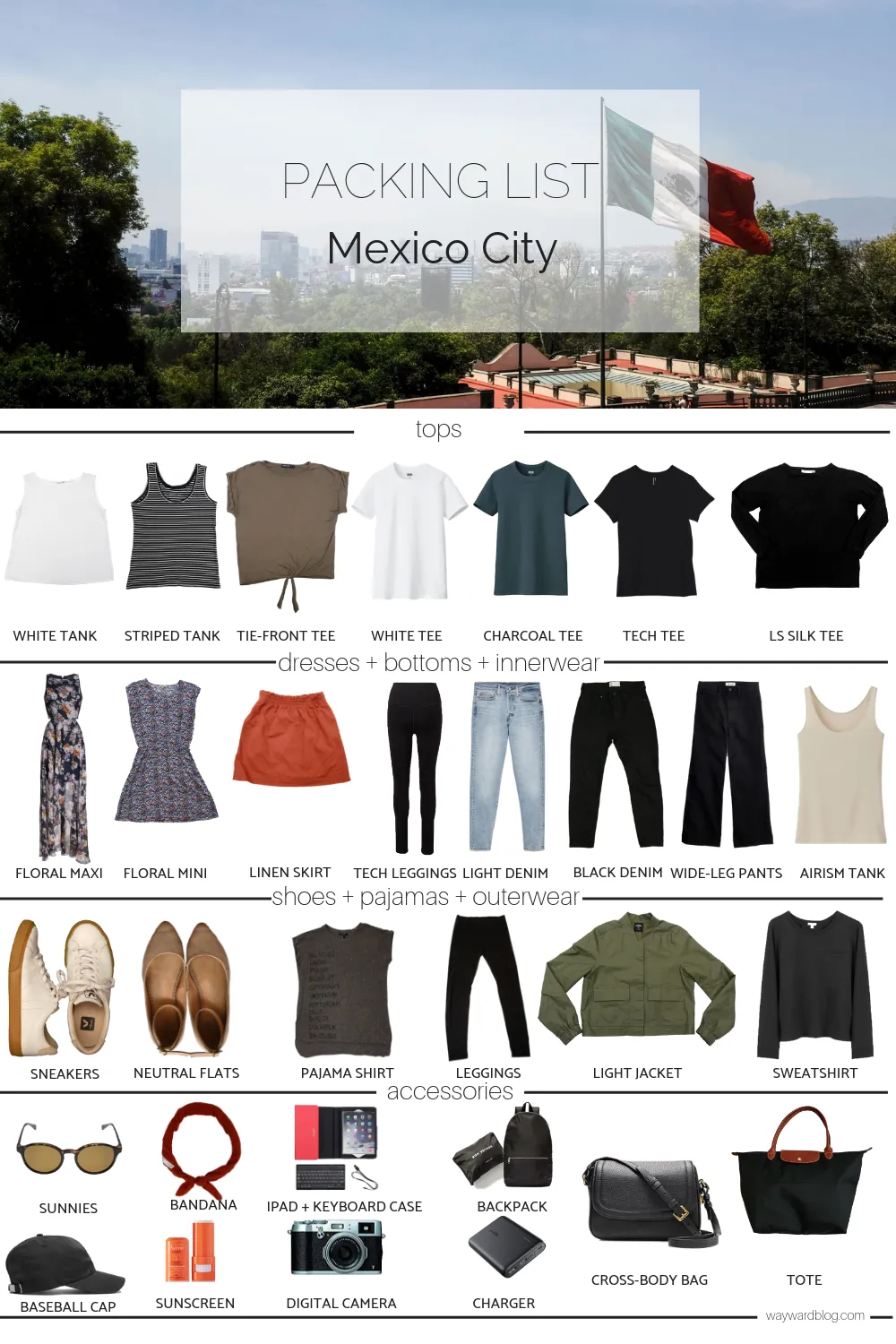
Weather and Clothing
Mexico City enjoys consistent temperatures, typically in the low 20°Cs (about 68°F to 72°F) year-round. But, summer brings rain in the evenings from late June through mid-October. Pack a light, waterproof jacket for these occasional downpours. Bring layers to adapt to cooler mornings and evenings, as temperatures can drop significantly at night.
Comfortable Footwear
Exploring Mexico City often involves a lot of walking, so it’s crucial to pack comfortable shoes. Opt for cushioned sneakers or supportive walking shoes to navigate the city streets with ease.
Dress Code
Locals, known as chilangos, tend to dress more formally, especially when dining at high-end restaurants or attending social events. Include a button-down shirt or a casual dress in your wardrobe to fit in during these outings.
Essentials
Pair your outfits with versatile layers. This approach ensures you’re prepared for the city’s variable climate. Pack casual and dressy outfits based on your planned activities.
Booking in Advance: Restaurants and Museums
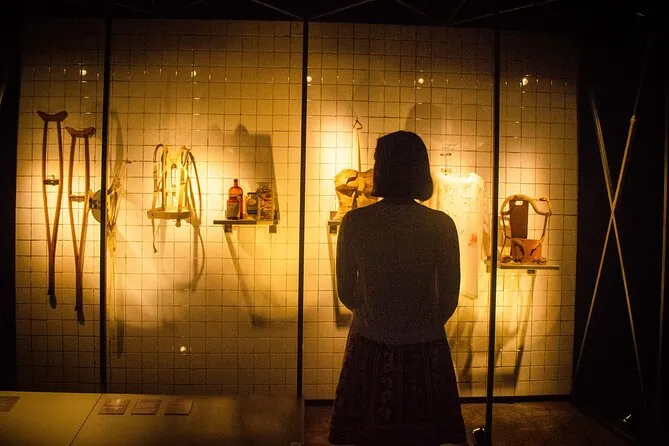
Booking Restaurants
Mexico City boasts a vibrant food scene with both high-end restaurants and street food. For popular and upscale restaurants, booking in advance is highly recommended. Neighborhoods like Polanco, known for gourmet cuisine, have restaurants that fill up quickly. Dining at Pujol in Polanco, a Michelin-starred restaurant, usually requires reservations well in advance.
Though street food is abundant and readily available without the need for reservations, knowing popular street food locations and markets can enhance your culinary experience. Explore places like Mercado de San Juan and El Huequito for iconic bites.
Booking Museums and Attractions
Many museums and historical sites in Mexico City attract large numbers of tourists. Booking tickets in advance can save you time and ensure your entry. Notably, the Frida Kahlo Museum in Coyoacán and the National Museum of Anthropology in Chapultepec often have long lines. Check their official websites for online ticket booking options.
Plan your visit to these sites during weekdays if you prefer fewer crowds. Advance bookings are crucial for a seamless experience at these top attractions.
Duration of Stay

Given the vastness and richness of Mexico City, plan a stay that allows you to explore the city thoroughly. A minimum of 4-7 days is recommended to get a good feel for the city. Investigate into its vibrant neighborhoods, historic sites, and diverse cultural offerings.
Examples of top attractions include the Zócalo, Chapultepec Park, and the Frida Kahlo Museum. Each site demands time and attention, making a shorter visit insufficient if you aim to truly appreciate the city. If your schedule permits, an extended stay of a week or more allows for a deeper exploration.
Plus to well-known sights, allocate time for hidden gems like the Xochimilco floating gardens and the bustling markets such as Mercado La Merced. These experiences provide a fuller picture of Mexico City’s character.
With an extended stay, balance your itinerary between popular destinations and lesser-known spots. Immerse yourself in local life, sample street food, and discover the city’s artistic and historical depth. A well-planned trip enhances your encounter with Mexico City’s multifaceted charm.
Tipping Etiquette
Tipping Culture
- In Mexico City, tipping is important though typically less than in the United States. Restaurant and bar tips range from 10% to 15% of the total bill.
Service Staff
- For waiters and bartenders, a 10% to 15% tip is customary. If a service charge is already on the bill, rounding up or adding a small extra amount for exceptional service is polite.
Other Services
- Taxi drivers usually receive a rounded-up fare to the nearest peso. Avoid taxis for safety reasons; Uber or other safer transport methods are recommended.
- For tour guides, tipping 100-200 pesos per person for a full-day tour is considered polite.
Budget Considerations
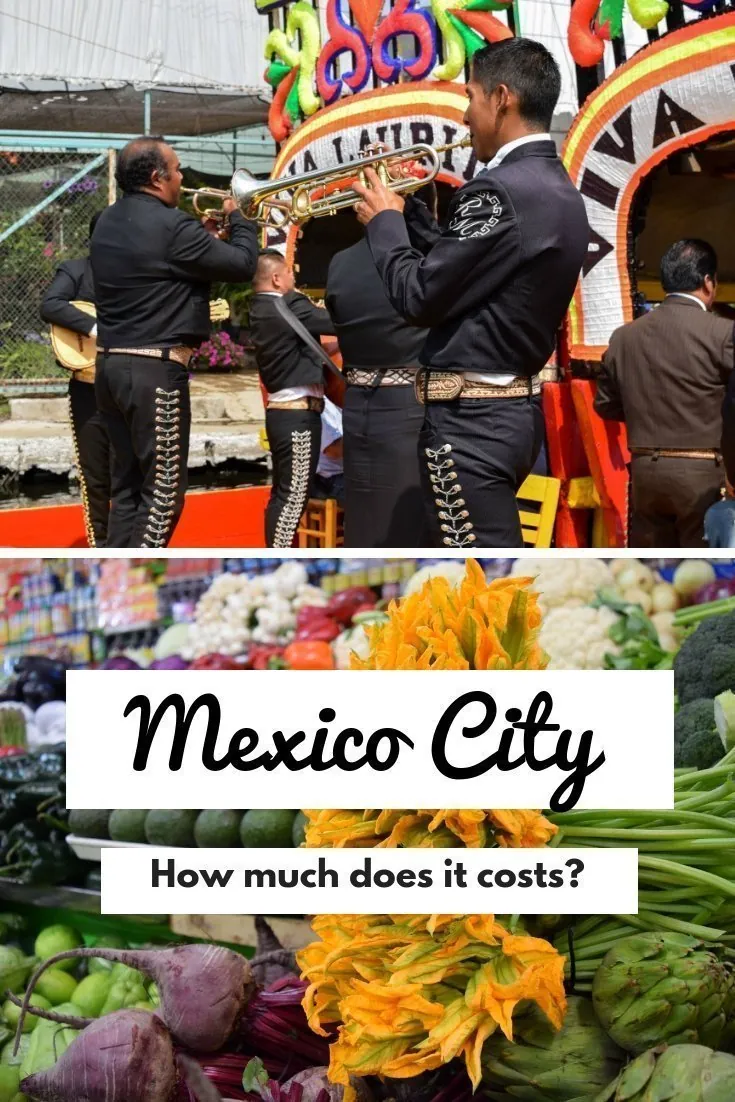
When planning your trip to Mexico City, it’s essential to keep budget considerations in mind. The local culture, transportation options, and accommodation choices significantly impact your travel expenses. Here’s a detailed breakdown of what to expect:
Currency and Payment
While many tourist areas in Mexico City accept credit cards, cash is still widely used. Using ATMs provides access to local currency, though you should be aware of potential fees. It’s advisable to carry cash for smaller establishments, markets, and tips.
Tipping
Tipping is customary in Mexico City, notably in restaurants and bars. A standard tip ranges from 10% to 15%. Always check if a service charge is included in your bill; if so, a small additional amount for exceptional service is polite.
Transportation
Utilizing Uber or other ride-sharing services often proves cost-effective and safer compared to hailing street taxis. But, public transportation, such as the metro and buses, offers an affordable and efficient alternative. The Metrobus, Metro, and RTP buses cover extensive routes, making it easy to explore the city economically.
Accommodation
Staying in the central neighborhoods of Condesa, Roma, and Juárez may be pricier but offers proximity to major attractions and a wide range of lodging options—from boutique hotels to budget-friendly hostels. Compare prices to find accommodations within your budget.
| Accommodation Type | Neighborhood | Price Range (per night) |
|---|---|---|
| Boutique Hotel | Condesa | $100 – $300 |
| Hostel | Roma | $15 – $40 |
| Mid-range Hotel | Juárez | $50 – $150 |
Dining
The food scene in Mexico City ranges from high-end restaurants to street food stalls. Upscale dining, particularly in neighborhoods like Polanco, often requires reservations and larger budgets. For budget-friendly options, street food, local markets, and casual eateries provide delicious alternatives without straining your finances.
- Mix Dining Options: Balance meals between fancy restaurants and budget-friendly street food.
- Public Transport: Use buses and the metro to reduce transportation costs.
- Cash Management: Withdraw enough cash to cover daily expenses and tips, minimizing frequent ATM fees.
Incorporate these budget considerations into your travel plans to make the most of your Mexico City adventure. With careful planning, you can enjoy the city’s vibrant culture, rich history, and culinary delights without overspending.
Street Food Tips
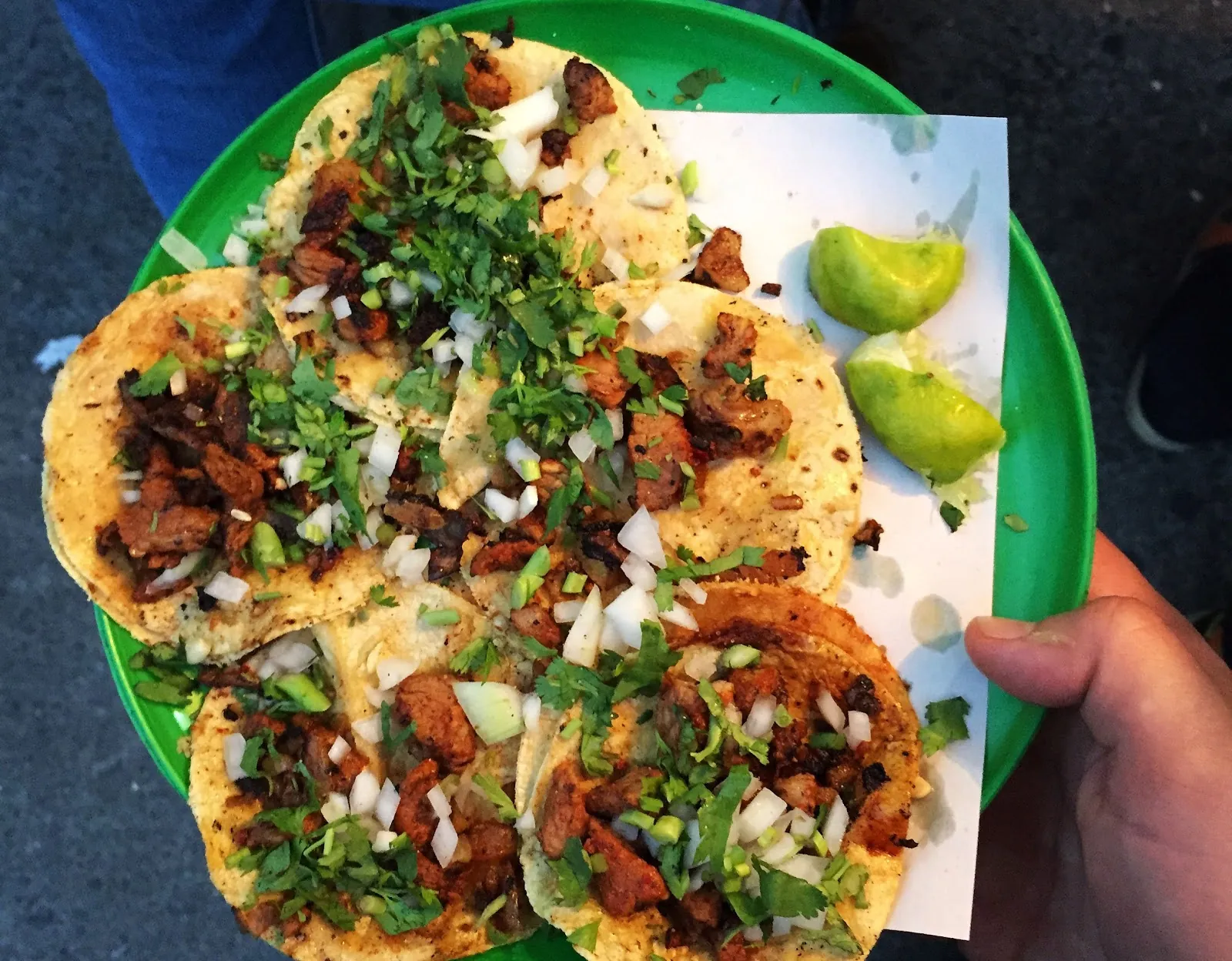
Street food in Mexico City offers an authentic taste of local culture. Prepare for a delightful culinary journey with these essential tips.
Cash Is King
Vendors typically prefer cash, making it crucial to carry enough pesos. Credit cards are seldom accepted at street food stalls.
Hygiene
Ensuring the food is cooked in front of you and served hot can reduce the risk of foodborne illnesses. Look for vendors with high customer turnover, ensuring fresh ingredients.
Popular Options
Sampling iconic dishes enhances the experience in bustling areas. Try tacos al pastor, tacos de lengua, and elote. These popular street foods are local favorites.
What to Eat
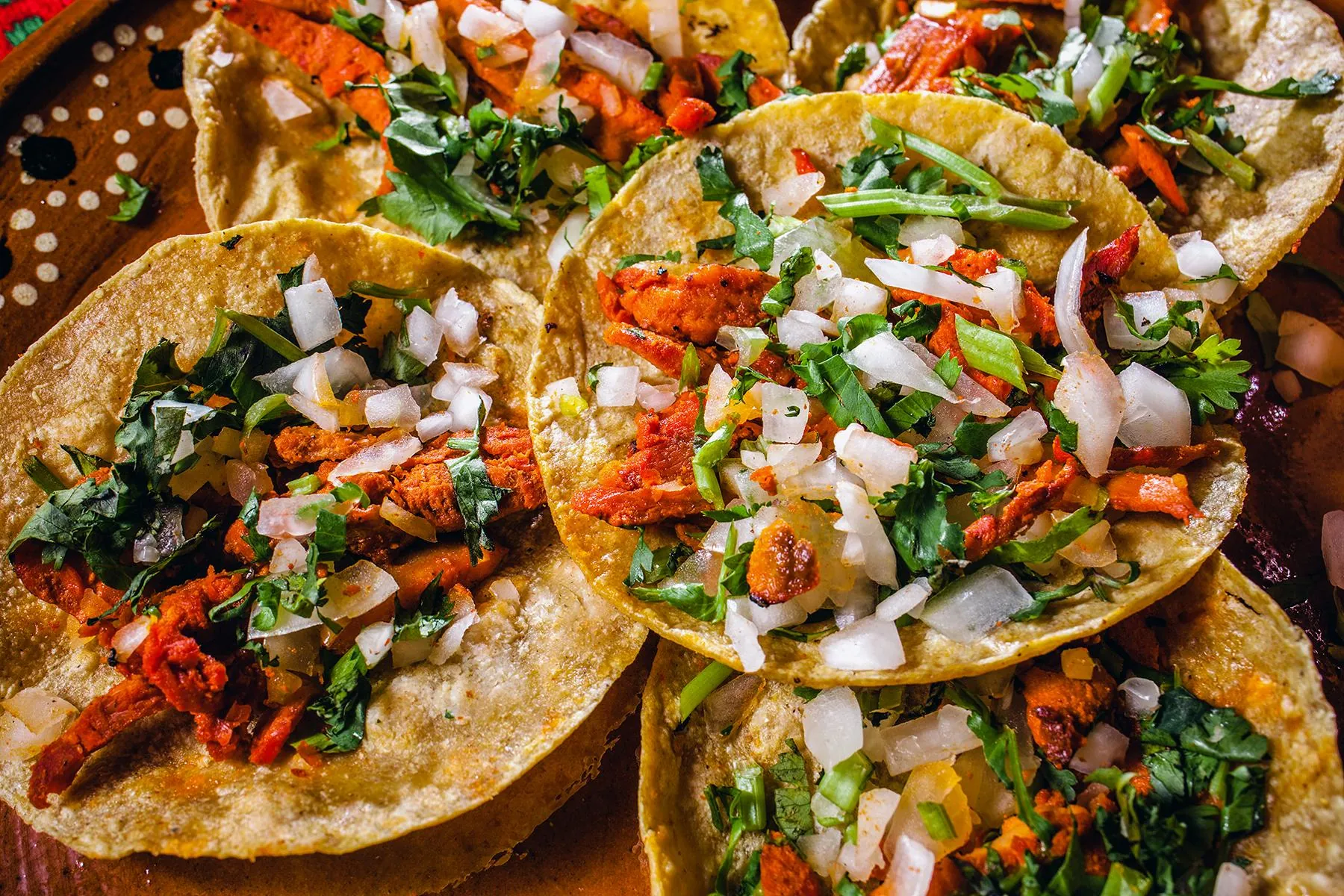
Local Specialties
Mexico City’s culinary heritage is rich. Don’t miss pozole, a hominy soup, chiles rellenos, stuffed peppers, and chilaquiles, a dish of fried tortillas with salsa.
Vegetarian Options
Vegetarians will find plenty of options, particularly in areas like Roma and Condesa. Local vegetarian dishes include tacos, soups, and salads.
Safety Precautions
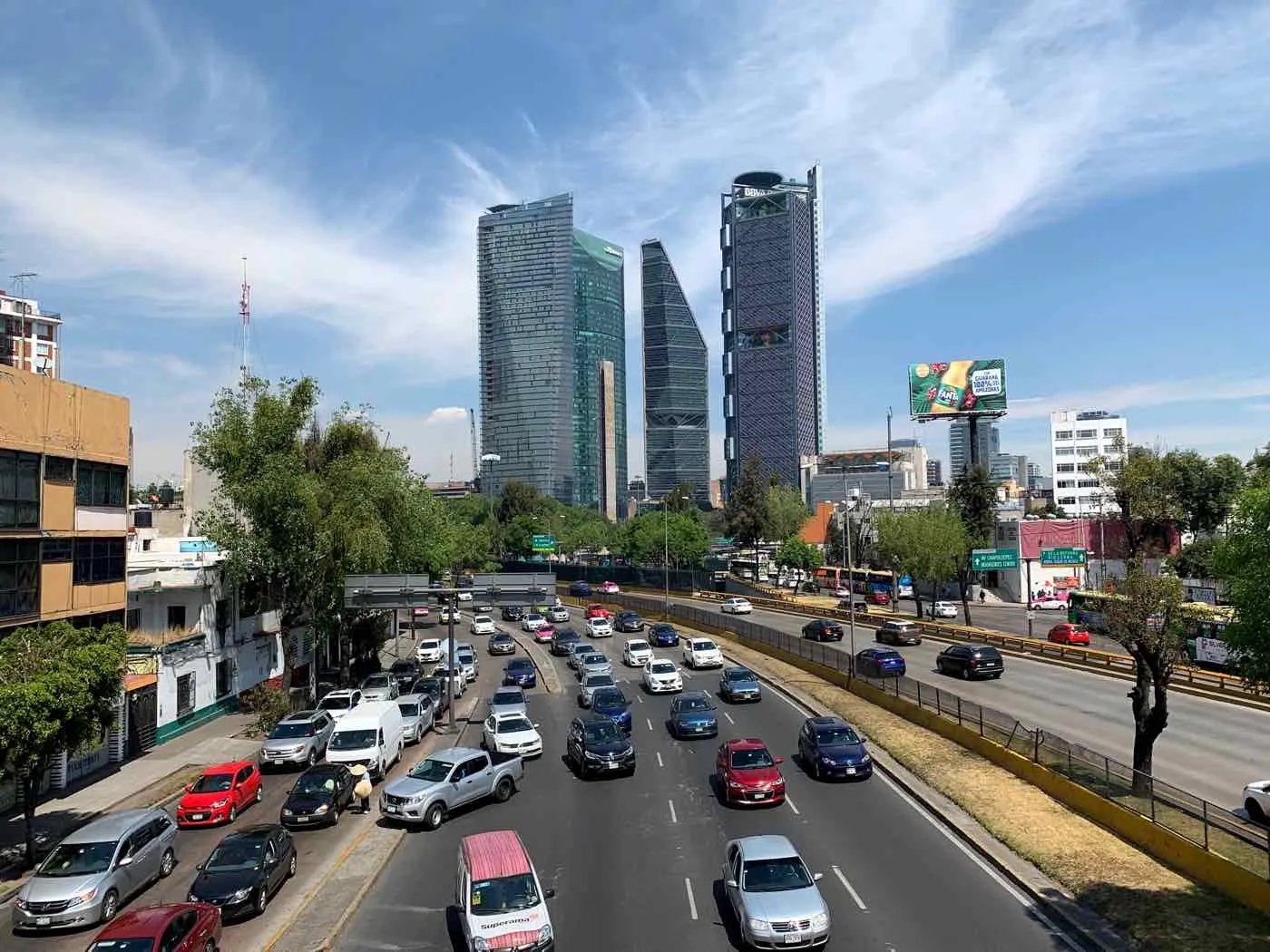
Food Safety
Opt for vendors with many customers and visible cooking. This practice ensures fresh, safe food. Street food in busy areas like Centro Histórico is generally safe.
General Safety
Stay aware of your surroundings and keep valuables secure. Avoid poorly lit or isolated areas at night. Using rideshare apps like Uber can offer safe transportation.
By following these tips, you’ll make the most of Mexico City’s vibrant street food scene.
Water Safety
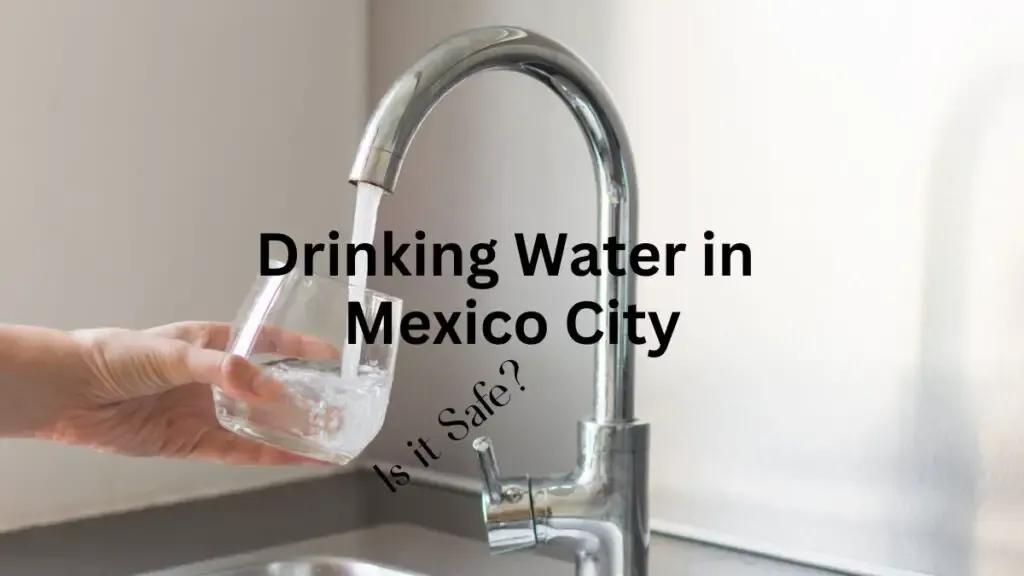
Tap water in Mexico City isn’t safe to drink. Locals even avoid it to prevent health issues like Montezuma’s Revenge.
Bottled Water
Bottled water is widely available and inexpensive, usually about $1 for a large bottle. To ensure safety, use bottled water for drinking and brushing your teeth.
Avoiding Contaminated Water
Be cautious with ice, unpeeled fruits or vegetables that may have been washed with tap water. Stick to bottled or filtered water to prevent waterborne illnesses like diarrhea and gastroenteritis.
By following these guidelines, you minimize the risk of water-related health issues during your visit to Mexico City.
Crime and Safety Tips
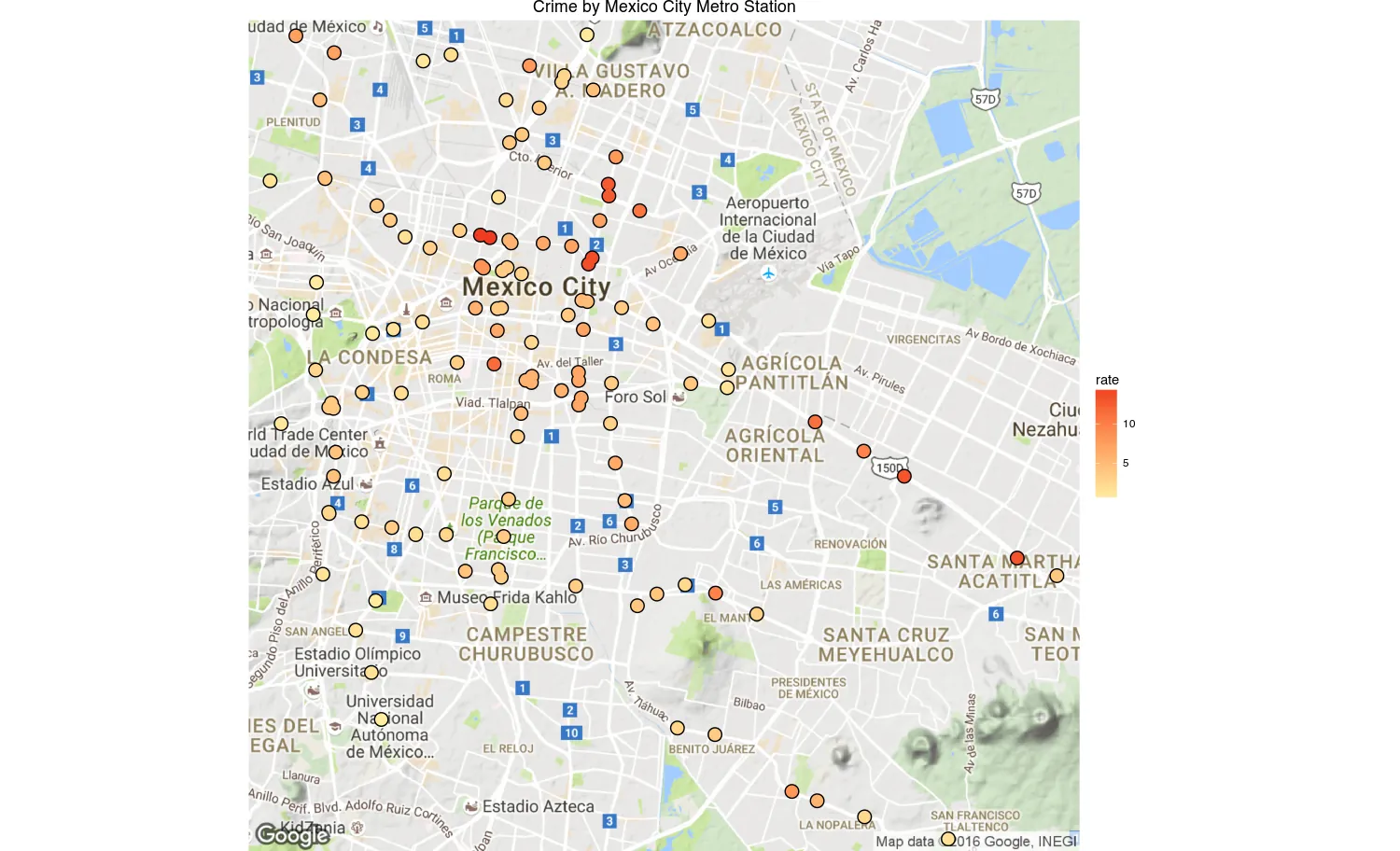
Understanding crime and safety is essential for a comfortable visit to Mexico City. While the city offers vibrant neighborhoods and historic sites, it’s important to take certain precautions to ensure a secure trip.
Safety in Central Neighborhoods
Central neighborhoods like Roma, Polanco, Coyoacán, and Condesa are generally safer than many areas in other major cities. These areas see increased security patrols, enhancing safety for both locals and tourists. For instance, Polanco and Roma are comparable in safety to affluent areas in cities like San Francisco or Los Angeles.
General Safety Precautions
Being vigilant about your surroundings is crucial in Mexico City. Petty crime and pickpocketing occur in tourist-heavy areas. Keep your valuables secure and avoid showing large amounts of cash or wearing expensive jewelry. Carry photocopies of important documents and leave the originals in your hotel safe.
Public Transportation
When using public transportation, especially the Metro and buses, watch out for pickpockets. Uber is often recommended over regular taxis for increased safety and reliability. Uber provides a way to navigate the city without dealing with potentially unsafe taxi services, especially at night.
By staying informed and taking these precautions, you can enjoy a safe and memorable experience in Mexico City.
Respect Local Laws and Customs
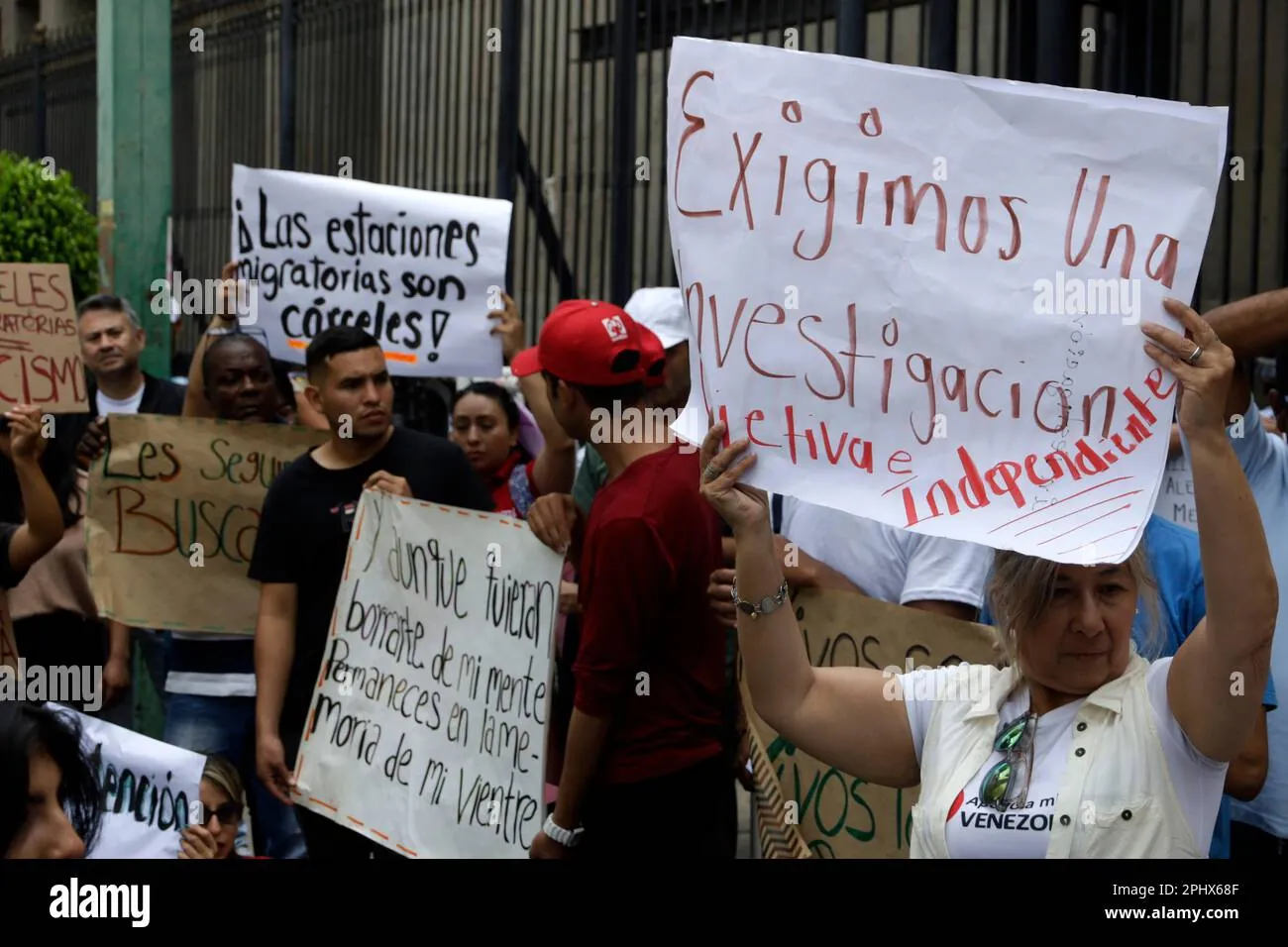
Local Laws
- Drinking in Public: Drinking alcohol on the streets of Mexico City is illegal, and violators may face fines or jail time. Stick to designated areas like bars or restaurants for consuming alcohol.
- Drug Use: Though the possession of small amounts of drugs for personal use was decriminalized in 2009, avoid using any drugs. Legal issues can still arise, affecting your trip.
- Public Transportation: Pickpocketing is common in public transport like the Metro and buses. Use Uber or pre-booked transfers for safer travel.
- Dress Code: Chilangos (locals) tend to dress stylishly, especially when attending social events or dining at high-end restaurants. Comfortable, chic clothing helps you blend in and feel confident.
- Greetings and Manners: Mexicans value politeness and respect. Common greetings include a handshake or a cheek kiss. Using “please” (por favor) and “thank you” (gracias) goes a long way in social interactions.
Safety-conscious travelers keeping these points in mind will enjoy a more seamless and respectful visit to Mexico City.
Staying Hydrated at High Altitudes
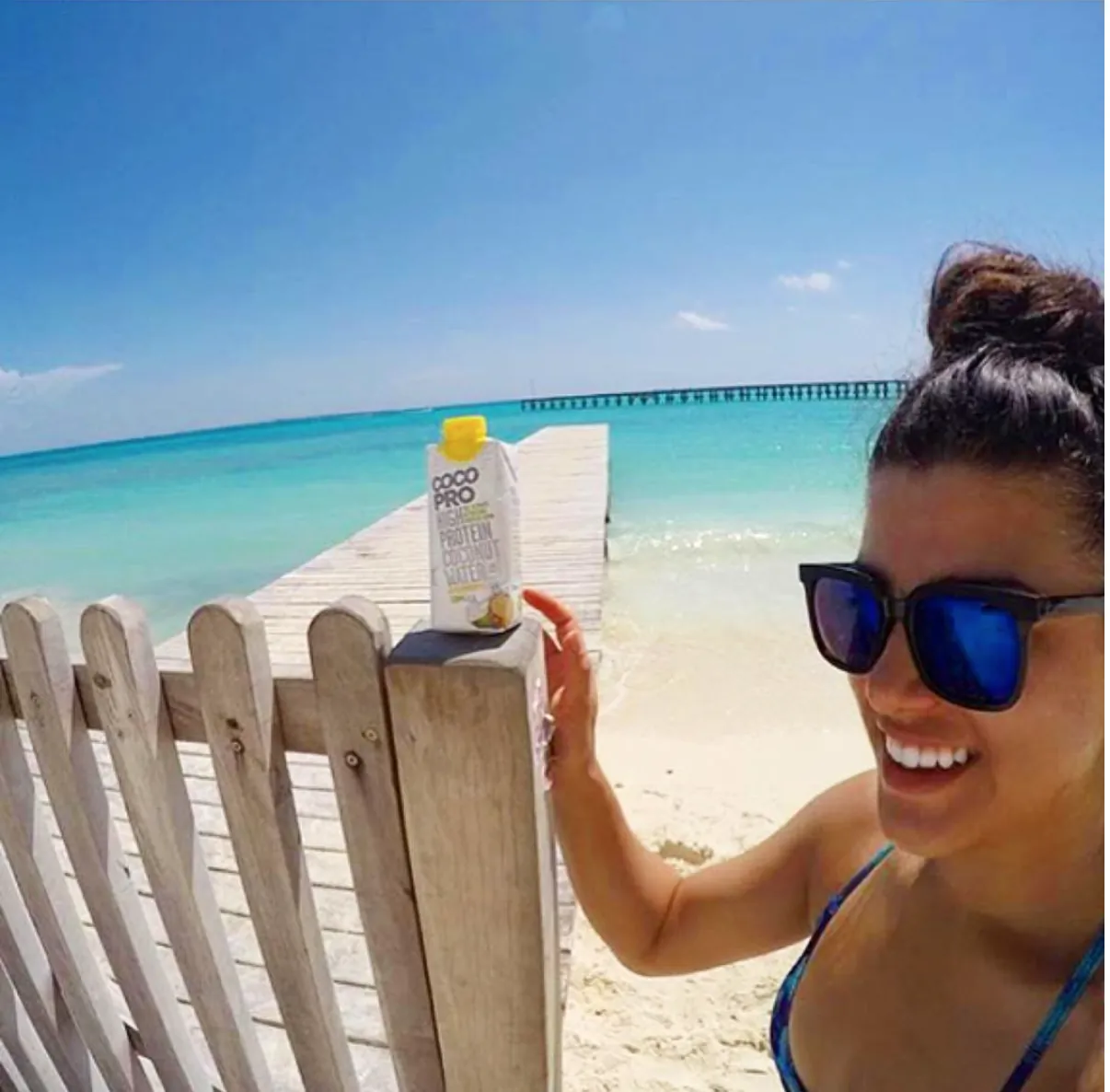
Mexico City sits at a high altitude, which can increase the risk of dehydration. It’s essential to drink plenty of water, but you should avoid drinking tap water as it’s not safe for consumption. Bottled water is widely available and affordable, making it the best option to stay hydrated.
Use bottled water not just for drinking but also for brushing your teeth to prevent any potential health issues. High altitudes can exacerbate dehydration, so be vigilant about your water intake during your stay.
Overview
- Location: Mexico City, the capital of Mexico, is known for its high altitude.
- Climate: Temperatures range from 68°F to 72°F year-round.
- Best Time to Visit: Summer brings evening rain; plan accordingly.
Top Attractions
- Zócalo: A historic plaza with significant cultural landmarks.
- Chapultepec Park: One of the largest city parks in the Western Hemisphere.
- Frida Kahlo Museum: Dedicated to the famous Mexican artist.
Hidden Gems
- Xochimilco Floating Gardens: Unique canals with colorful boats.
- Mercado La Merced: A bustling market with local goods.
- Coyoacán: A historic neighborhood with vibrant streets.
Accommodations
| Neighborhood | Description | Price Range per Night |
|---|---|---|
| Roma | Trendy and artistic | $50 – $150 |
| Polanco | Upscale, luxury options | $150 – $500 |
| Condesa | Bohemian and relaxed | $70 – $200 |
| Juárez | Central, budget-friendly | $30 – $100 |
Dining Highlights
- Reservations: Essential for places like Pujol in Polanco.
- Street Food: Tacos al pastor and elote are must-tries.
- Vegetarian Options: Available in neighborhoods like Roma and Condesa.
Transportation & Practical Tips
- Safety: Stick to safer neighborhoods and use Uber.
- Navigation: Set up your phone for roaming to navigate easily.
- Currency: Carry cash for smaller purchases and tips.
Seasonal Variations
- Weather: Consistent temperatures but evenings can be rainy in summer.
- Events: Plan around major festivals for a richer experience.
- Dining: A mix of upscale and street food can balance your budget.
- Accommodation: Wide range of options to suit all budgets.
- Transport: Uber and public transit are cost-effective.
Staying properly hydrated, especially at higher altitudes, is crucial for an enjoyable trip to Mexico City. Prioritize your health and plan effectively to make the most of your visit.
Natural Disaster Awareness
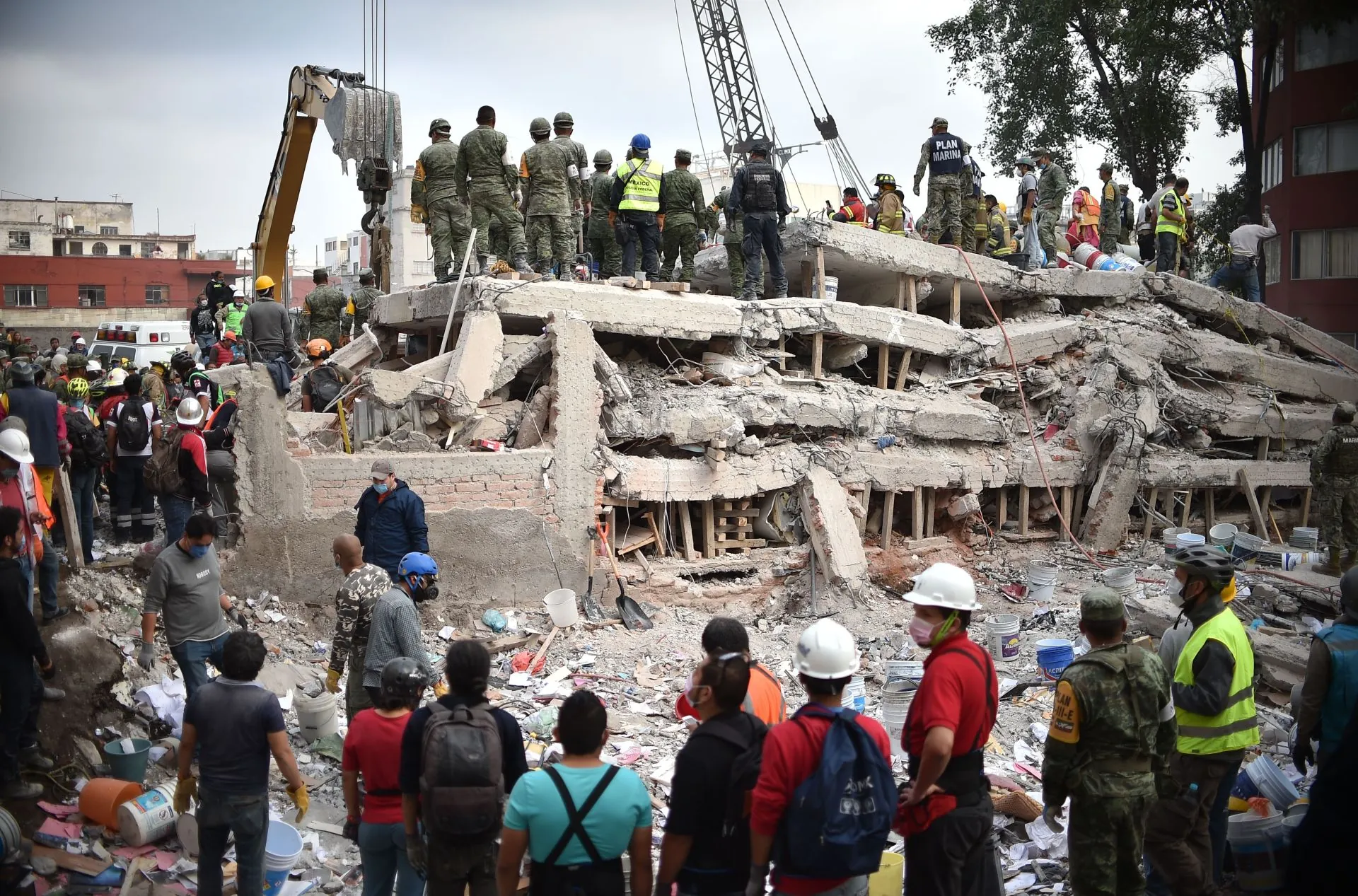
Mexico City’s unique location makes it essential to stay informed about natural disasters. Earthquakes are a considerable risk, given the city’s position on the Trans-Mexican Volcanic Belt. Knowing basic earthquake safety procedures can make a big difference. Drop, cover, and hold on during a quake. Identify safe spots like under sturdy furniture and avoid windows.
Monitors and alarms, such as the Seismic Alert System, provide critical early warnings. Subscribe to local updates and familiarize yourself with the city’s emergency protocols. Stay connected through reliable news sources and social media channels for real-time information.
Flooding can occur during the rainy season, which lasts from late June to mid-October. Flash floods often follow evening downpours, making waterproof gear crucial. Always check the weather forecast before heading out, and avoid low-lying areas during heavy rain.
Air pollution, another concern, can affect your health, especially if you have respiratory issues. Even though improvements, pollution levels can spike. Use apps like AirVisual to monitor air quality and plan activities when pollution is lower. Equipped with this knowledge, you can enjoy Mexico City while staying safe.
Conclusion
Visiting Mexico City is an adventure filled with rich history, vibrant culture, and mouth-watering cuisine. By being well-prepared and understanding local customs, you’ll navigate the city with ease and confidence. Remember to pack appropriately for the weather, make reservations for popular spots, and immerse yourself in both well-known attractions and hidden gems. Stay mindful of safety tips, budget wisely, and savor the diverse culinary offerings. With these insights, you’re set for an unforgettable experience in one of the world’s most dynamic cities. Enjoy your journey and embrace all that Mexico City has to offer!
Frequently Asked Questions
How many days should I spend in Mexico City?
To fully appreciate Mexico City, a stay of at least 4-7 days is recommended. This allows ample time to explore vibrant neighborhoods, historic sites, and cultural attractions.
What should I pack for a trip to Mexico City?
Pack a light, waterproof jacket, comfortable footwear for walking, and outfits suitable for both casual and formal settings. Temperatures are typically in the low 20°Cs (about 68°F to 72°F), with evening rain common in summer.
Is it necessary to book restaurants and museums in advance?
Yes, booking in advance is recommended for popular upscale restaurants and major museums. This helps avoid long lines and ensures entry, especially for places like the Frida Kahlo Museum and the National Museum of Anthropology.
What is the tipping etiquette in Mexico City?
Tipping is important but typically less than in the United States. In restaurants and bars, a tip of 10% to 15% is customary. Taxi drivers usually receive a rounded-up fare, and tour guides are tipped about 100-200 pesos per person for a full-day tour.
How can I ensure food safety, especially with street food?
Opt for vendors who cook food in front of you and have high turnover of ingredients. Stick to busy vendors, carry cash, and avoid tap water. Instead, use bottled water for drinking and brushing teeth to prevent health issues.
Is tap water safe to drink in Mexico City?
No, tap water in Mexico City isn’t safe to drink. Use bottled water for drinking and brushing teeth. Be cautious with ice and unpeeled fruits or vegetables that may have been washed with tap water.
Are there any safety tips for traveling in Mexico City?
Stay vigilant about your surroundings, secure your valuables, use Uber for safer transportation, and be cautious on public transit. Central neighborhoods like Roma, Polanco, Coyoacán, and Condesa are generally safer with increased security patrols.
What are some important local customs and laws to be aware of?
Drinking alcohol in public is illegal; consume it only in designated areas. Dress stylishly to blend in with locals and practice polite greetings and manners. Avoid drug use to prevent legal issues.
How should I prepare for natural disasters in Mexico City?
Familiarize yourself with basic earthquake safety procedures and stay informed about local emergency protocols. Monitor air quality due to pollution levels using apps to plan activities accordingly.

